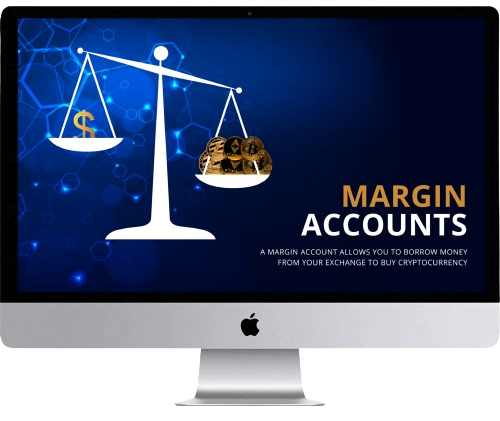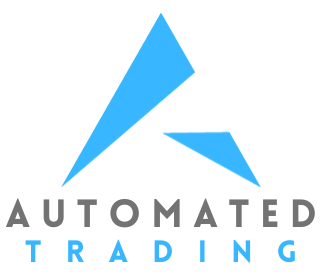What Is A Margin Account?
Here's how it works in simple terms







In essence, a margin account gives you the ability to trade larger positions and potentially earn higher returns, but it also increases the potential for losses. It’s essential to use margin carefully, manage risk, and be aware of the costs and obligations associated with borrowing money from your broker.
- Leverage: With a margin account, you can amplify your trading power. By borrowing money from your broker, you can control a larger position in the market. If the market moves in your favor, your gains can be magnified.
- Short Selling: Margin accounts enable you to engage in short selling, which means you can profit from falling prices. This can be an advantage in bearish or volatile markets.
- Portfolio Diversification: With increased buying power, you can diversify your portfolio more effectively, potentially reducing risk.
- Interest Costs: You’ll typically pay interest on the borrowed funds in a margin account. If your investments don’t generate returns higher than the interest rate, you could end up with losses.
- Margin Calls: If the value of your investments falls significantly, your broker may issue a margin call, requiring you to deposit additional funds or sell assets to cover the debt. This can lead to forced selling at unfavorable prices.
- Higher Risk: While leverage can amplify gains, it also amplifies losses. Using margin without a solid risk management strategy can result in substantial losses.
- Costs and Fees: Margin accounts often come with additional fees and costs, including interest, commissions, and maintenance requirements.
- Regulatory Limits: Regulatory authorities impose rules and limits on margin trading to protect investors. Brokers may have their own policies and requirements as well.
In summary, while a margin account can provide opportunities for potentially higher returns, it’s crucial to use it wisely and be aware of the increased risks. It’s not a guaranteed way to make more money, and it requires a solid understanding of trading, risk management, and the associated costs. Many investors choose to use margin sparingly or avoid it altogether to reduce their exposure to potential losses.
How Much Collateral Is Needed for Margin Accounts
The collateral requirements for setting up a margin account can vary significantly from one brokerage firm to another and depend on several factors, including the specific brokerage’s policies, regulatory requirements, and the assets you intend to trade. However, there are some general guidelines to consider:
In the United States, the Financial Industry Regulatory Authority (FINRA) sets the minimum initial margin requirement for margin accounts. Currently, the minimum is $2,000, but individual brokerage firms may have higher requirements. Some brokers may set higher minimums for certain types of accounts or trading activities.
The amount of collateral required can vary based on the assets you plan to trade. Different securities (stocks, options, futures, crypto, etc.) and their associated risks may have varying collateral requirements. For example, trading options or futures often requires more collateral than trading stocks or cryptocurrency.
Your broker may allow you to trade with varying levels of leverage. Higher leverage means you can control larger positions with a smaller amount of collateral. However, higher leverage also increases risk. Some brokers offer different levels of margin based on your risk tolerance and trading experience.
The composition of your investment portfolio can also affect margin requirements. Some brokers may offer portfolio margin accounts that consider the risk of your entire investment portfolio rather than individual positions.
The volatility of the assets you intend to trade can impact margin requirements. Highly volatile assets may require higher collateral to account for potential price swings.
Each brokerage firm sets its own margin policies, and these policies can vary widely. Some brokers may have stricter margin requirements than others, especially for certain assets or trading strategies.
Different types of margin accounts, such as standard margin accounts, portfolio margin accounts, and pattern day trading accounts, may have different collateral requirements.
It’s essential to check with your specific brokerage firm to understand its margin requirements fully. Most brokers provide information on their websites or through their customer support teams. Before trading on margin, it’s crucial to have a clear understanding of the margin requirements, the risks involved, and to ensure that you have the financial means to meet those requirements.
Remember that trading on margin carries additional risks, as losses can exceed your initial investment, and you may be required to deposit additional funds to cover losses. Therefore, it’s crucial to use margin carefully and consider your risk tolerance and financial situation when setting up a margin account.
SUBSCRIPTION
The APEX Crypto Signal Hub
Manual Spot Trading
The APEX Crypto Signal Hub
Manual Futures Trading
The Momentum Hunter Trading Bot
Fully Automated Spot Scalping
API Coded for:
- Coinbase
- Binance US
- Binance
- Kraken
The QUANT ENGINE Auto Trader
Fully Automated Spot Mid-Term Holding
API Coded for:
- Coinbase
- Binance
- Binance US
- Kraken
The LOGIC PRO Auto Trader
Fully Automated Futures Trading
API Coded for:
- Binance Futures (International)
- Kraken Futures (International)
The QUANTUM CYBER Auto Trader
Fully Automated Futures & Spot Mid-Term Holding
API Coded for:
- Binance Futures (International)
- Kraken Futures (International)
The APEX Crypto Signal Hub
Manual Spot Trading
The APEX Crypto Signal Hub
Manual Futures Trading
The Momentum Hunter Trading Bot
Fully Automated Spot Scalping
API Coded for:
- Coinbase
- Binance US
- Binance
- Kraken
The QUANT ENGINE Auto Trader
Fully Automated Spot Mid-Term Holding
API Coded for:
- Coinbase
- Binance
- Binance US
- Kraken
The LOGIC PRO Auto Trader
Fully Automated Futures Trading
API Coded for:
- Binance Futures (International)
- Kraken Futures (International)
The QUANTUM CYBER Auto Trader
Fully Automated Futures & Spot Mid-Term Holding
API Coded for:
- Binance Futures (International)
- Kraken Futures (International)
The APEX Crypto Signal Hub
Manual Spot Trading
The APEX Crypto Signal Hub
Manual Futures Trading
The Momentum Hunter Trading Bot
Fully Automated Spot Scalping
API Coded for:
- Coinbase
- Binance US
- Binance
- Kraken
The QUANT ENGINE Auto Trader
Fully Automated Spot Mid-Term Holding
API Coded for:
- Coinbase
- Binance
- Binance US
- Kraken
The LOGIC PRO Auto Trader
Fully Automated Futures Trading
API Coded for:
- Binance Futures (International)
- Kraken Futures (International)
The QUANTUM CYBER Auto Trader
Fully Automated Futures & Spot Mid-Term Holding
API Coded for:
- Binance Futures (International)
- Kraken Futures (International)




